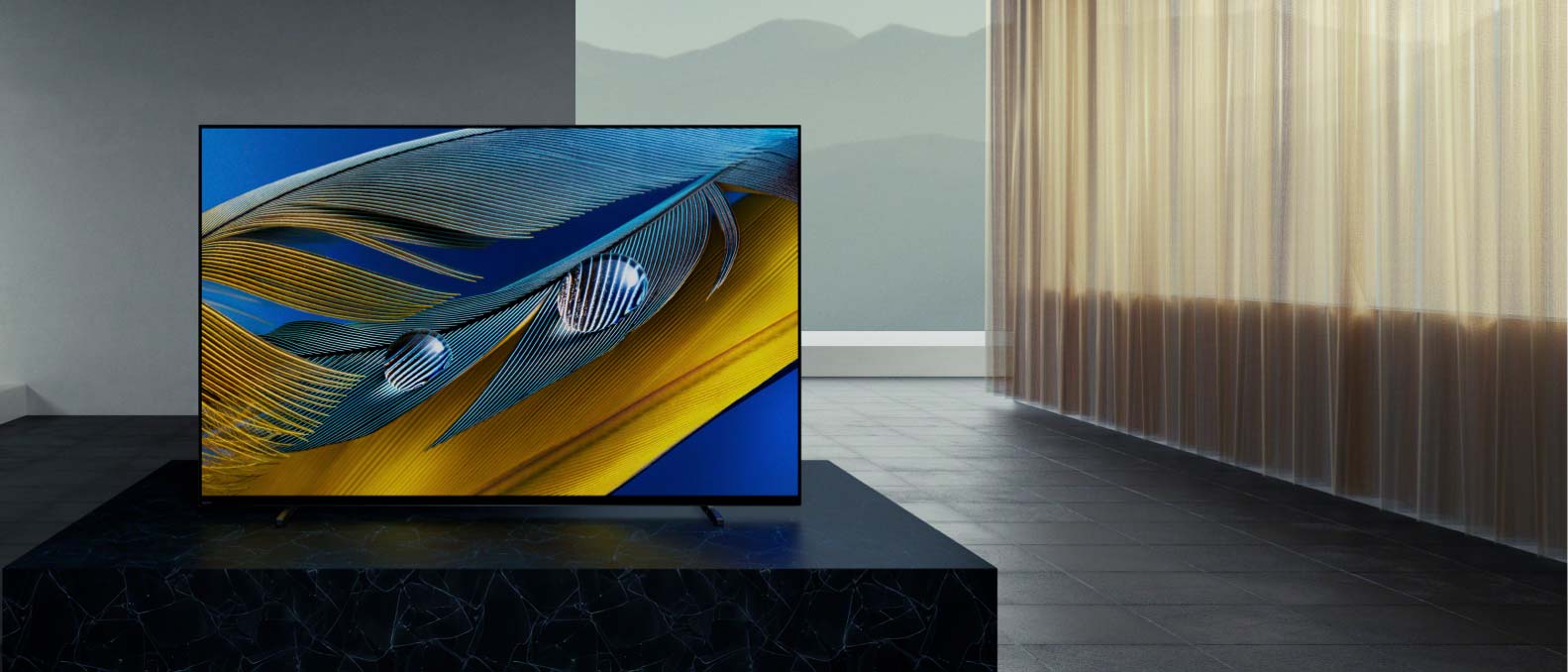Tom's Guide Verdict
The Sony Bravia XR A80J’s many forward-thinking features result in a TV that make it as good-looking and -sounding as it is convenient and fun to use.
Pros
- +
Outstanding picture, audio quality
- +
Lots of dynamic and smart features that really work
- +
Google TV interface is powerful and friendly
Cons
- -
Dynamic adjustments all but required for best picture
- -
Not all HDMI ports support HDMI 2.1 standard
- -
Bravia Core streaming service doesn’t dazzle
Why you can trust Tom's Guide
Price: $2,499.99
Model number: XR-65A80J
Screen size: 65 inches
Resolution: 3,840x2,160
HDR: HDR10, HLG, Dolby Vision
Refresh rate: 120 Hz
Ports: 4 HDMI; 3 USB
Audio: 10 watts x 3=
Smart TV software: Google TV
Size: 57.1 x 33 x 2.1 inches [w/o stand]
Weight: 49.2 pounds [w/o stand]
Who says you can’t have it all? The Sony Bravia XR A80J (from $1,899, $2,499 as tested) is packed with features designed to enhance every aspect of your TV viewing — and they almost all achieve their goals. This 4K OLED TV has HDR, a 120 maximum refresh rate (along with Variable Refresh Rate, or VRR), an ATSC 3.0 tuner, the sparkling new Google TV entertainment platform, support for and connections with a wide range of other Google apps and services, and a raft of proprietary Sony smart technologies targeting everything you see and hear on the screen at any given moment.
Most people won’t need (or be able to take in) everything Sony offers, and the dizzying number of complex settings, picture modes, and processing technologies may be too much for people who just want an amazing-looking and -sounding picture from their high-midrange ($2,499.99) purchase. But the Bravia XR A80J delivers on that so completely that it’s worth the fuss — and is instantly one of the best TVs you can buy.
Sony Bravia XR A80J review: Price and availability
For our Sony Bravia XR A80J review, we assessed the 65-inch version of the Sony Bravia XR A80J, the XR-65A80J. Because the other two available models, the 55-inch XR-55A80J and the 77-inch XR-77A80J, share the same core features and underlying technologies, we expect the performance of all three versions to be comparable, and our recommendations for the XR-65A80J may also apply to the other sets.
- 55-inch (model XR-55A80J): $1,899.99
- 65-inch (model XR-65A80J): $2,499.99
- 77-inch (model XR-77A80J): $3,999.99
Sony Bravia XR A80J review: Design
Sony hasn’t strayed far from its usual OLED design scheme with the A80J — but that’s not a bad thing.
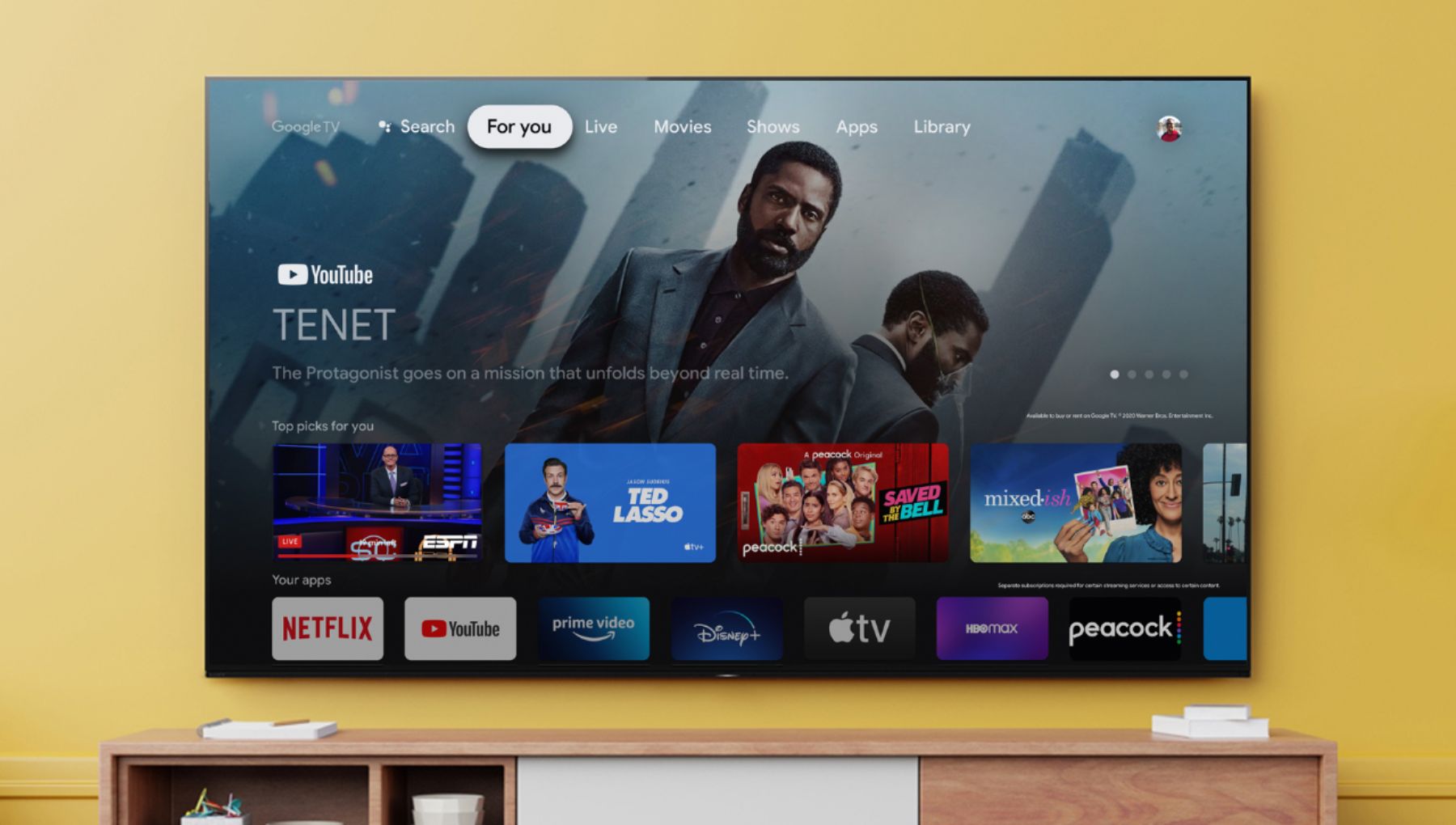
The front is attractive, the sprawling expanse of the ultrasvelte, jet-black screen (57.1x33 inches) broken by narrow (0.25 inch) bezels on the top and sides, with marginally wider (0.33 inch) bezels and the metallic Sony logo bar (another 0.33 inch) on the bottom. There’s nothing to distract you from the picture.

All the components (and the balance of the set’s bulk) go into the thick (41.3 x 22.8 x 1.6-inch) panel behind the screen, which, with its splash of textured squares and the four-triangle Bravia field in the middle, would be plenty appealing if you were ever intended to see it. The connectors for the 300x300 mm VESA mount are located there as well, in case you’d prefer your A80J hang on the wall.
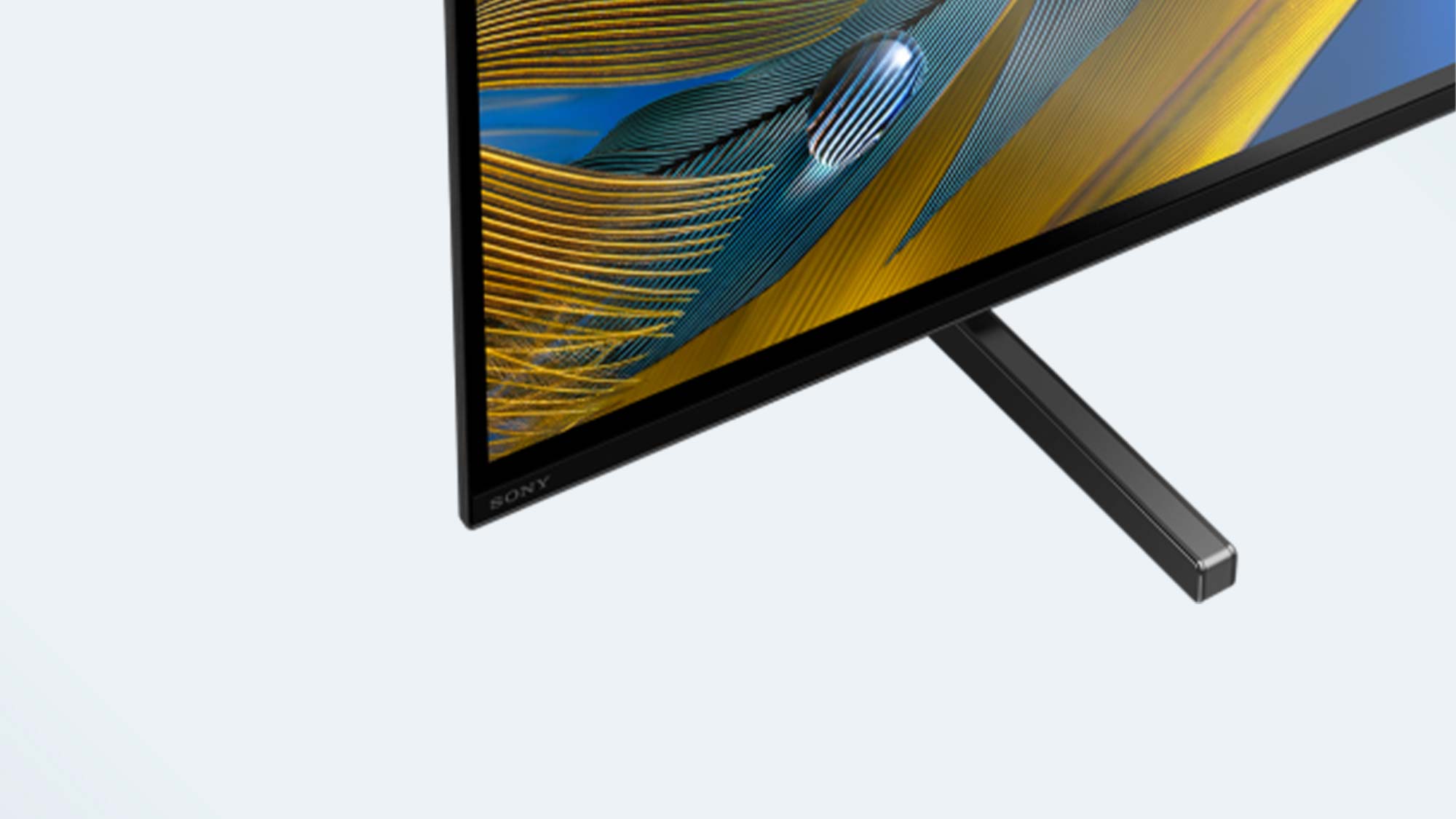
If, on the other hand, the A80J is bound for a table or entertainment center, the included two-piece layer aluminum stand can be installed three different ways: In “standard” position, where the feet are about 40.8 inches apart; in “narrow” position (and a width of 27.3 inches), designed for smaller tables or stands; and in “soundbar” position, which is only a smidgen wider than the standard setup (40.9 inches) but offers nearly 2 additional inches below the TV for positioning a squat soundbar.
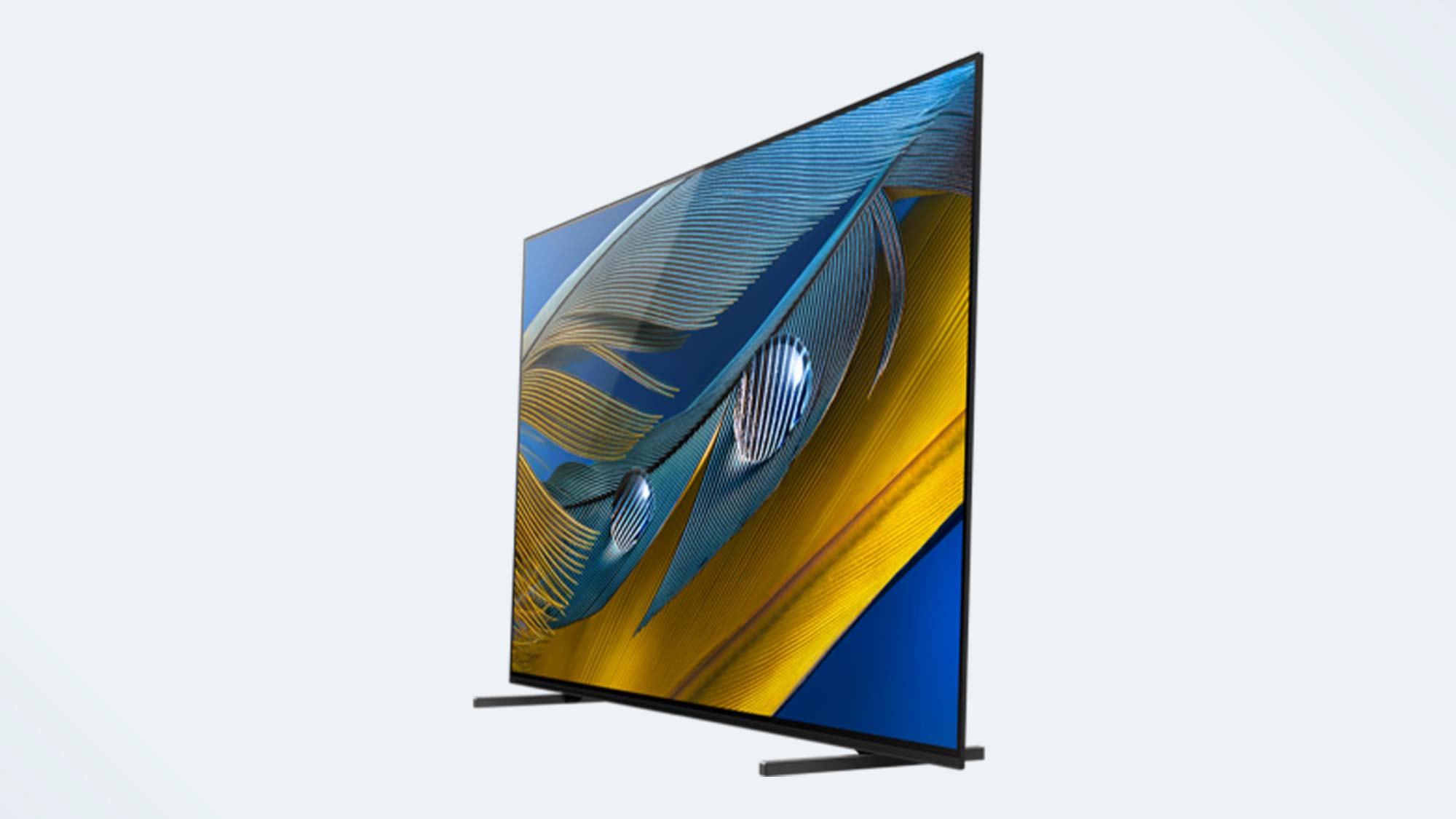
Sony Bravia XR A80J review: Ports
The A80J’s power input is located on the right side of the rear panel, and all the other ports are on the left. Six face straight out the TV’s left edge: one Remote IR in, two for composite video, two USB (both with 500 mA max power output), and one HDMI.
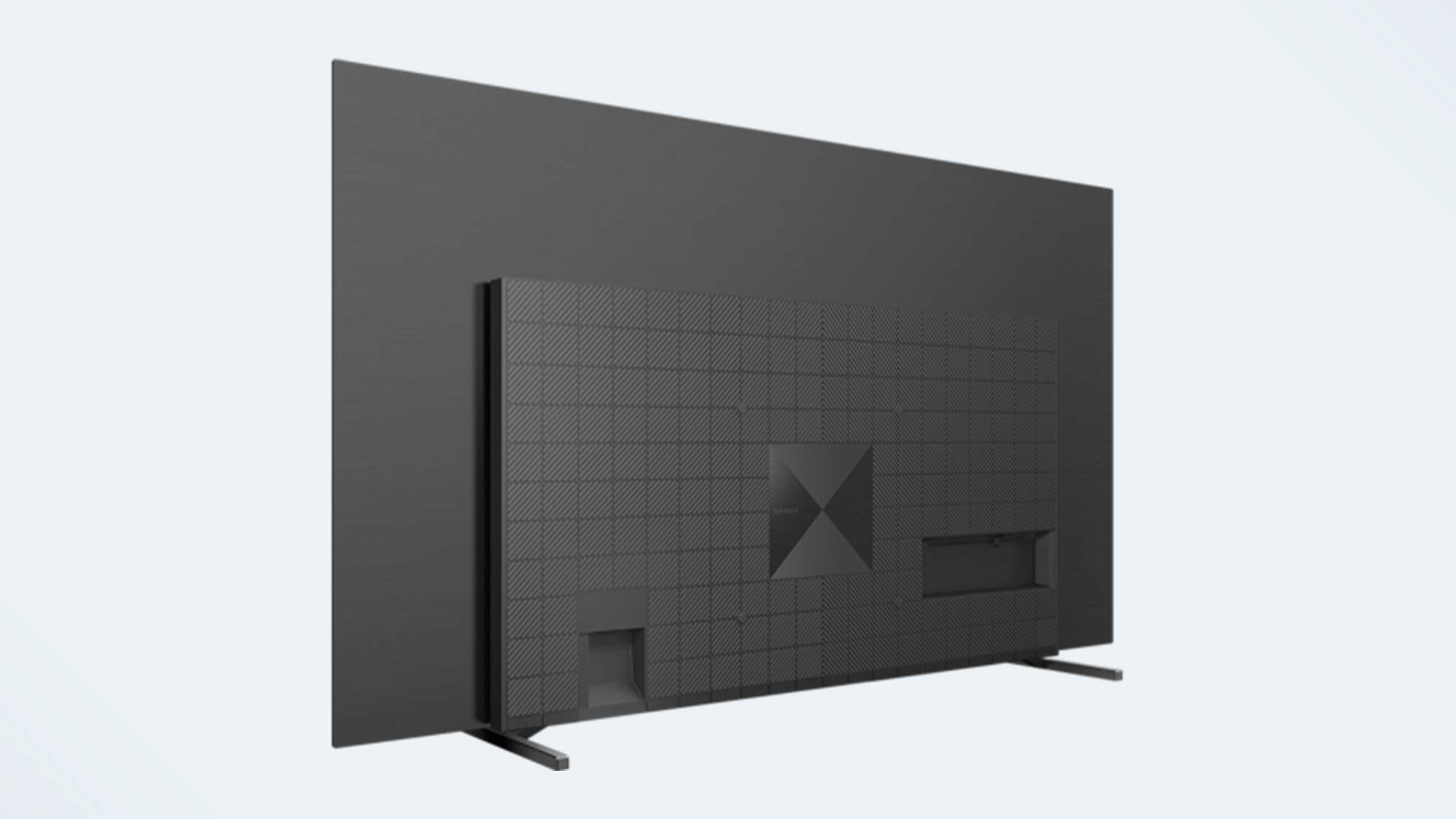
In a depression, facing towards the wall and requiring plugging up into the panel area, are the coaxial cable connector, an Ethernet port, the optical audio out, a port for an RS-232C remote, three additional HDMI ports, and one more USB port with a maximum 900 mA power output.
Of the four HDMI ports, only two support the HDMI 2.1 standard: ports 3 (also for eARC/ARC) and 4, which are the two innermost on the back panel. The other ports use only HDMI 2.0b. This is a little inconvenient, and a shame considering the higher standard’s flashy, useful capabilities (among them: 4K at 120 Hz, VRR, and Auto Low Latency Mode, or ALLM). All of the ports on the LG CX OLED and LG G1 OLED are HDMI 2.1, and that would be nice to see on a model such as this, too.
Sony Bravia XR A80J review: Cognitive Processor XR
Like all the TVs in Sony’s 2021 lineup, the A80J is equipped with the Cognitive Processor XR. Sony claims that this chip “understands how humans see and hear” and is “designed to replicate the way our brains think and respond” by simultaneously cross-analyzing the many different elements of the video and soundscape to figure out how to process them (in real time) to the highest level of quality, providing “a whole new experience that immerses you completely in the scene.”
The visual aspects of this technology present themselves as XR OLED Contrast, which adjusts brightness on the fly to boost lights and deepen blacks without losing detail; XR Color, for extending hue saturation and shading so every color has “the subtle differences seen in the real world”; XR Clarity, for improving 4K upscaling; and XR Motion, for intelligent, blur-free motion processing.
As far as audio, XR Sound Position works with Acoustic Surface Audio+ (see the Audio section below) to create the illusion the sound is coming from the point on the screen where it occurs in your content. XR Surround purportedly “creates surround sound from the sides and vertically,” even if all you have are the TV’s integrated speakers. And Voice Zoom 2 detects and enhances dialogue so you can hear it better, regardless of what else is happening on screen.
Sony Bravia XR A80J review: Performance and picture quality
Whether you get your content through streaming or via the ATSC 3.0 tuner (which enables 4K broadcasts and 3D audio support, and combines broadcast and ISP and over-the-air content), the A80J’s picture impresses across all viewing scenarios.
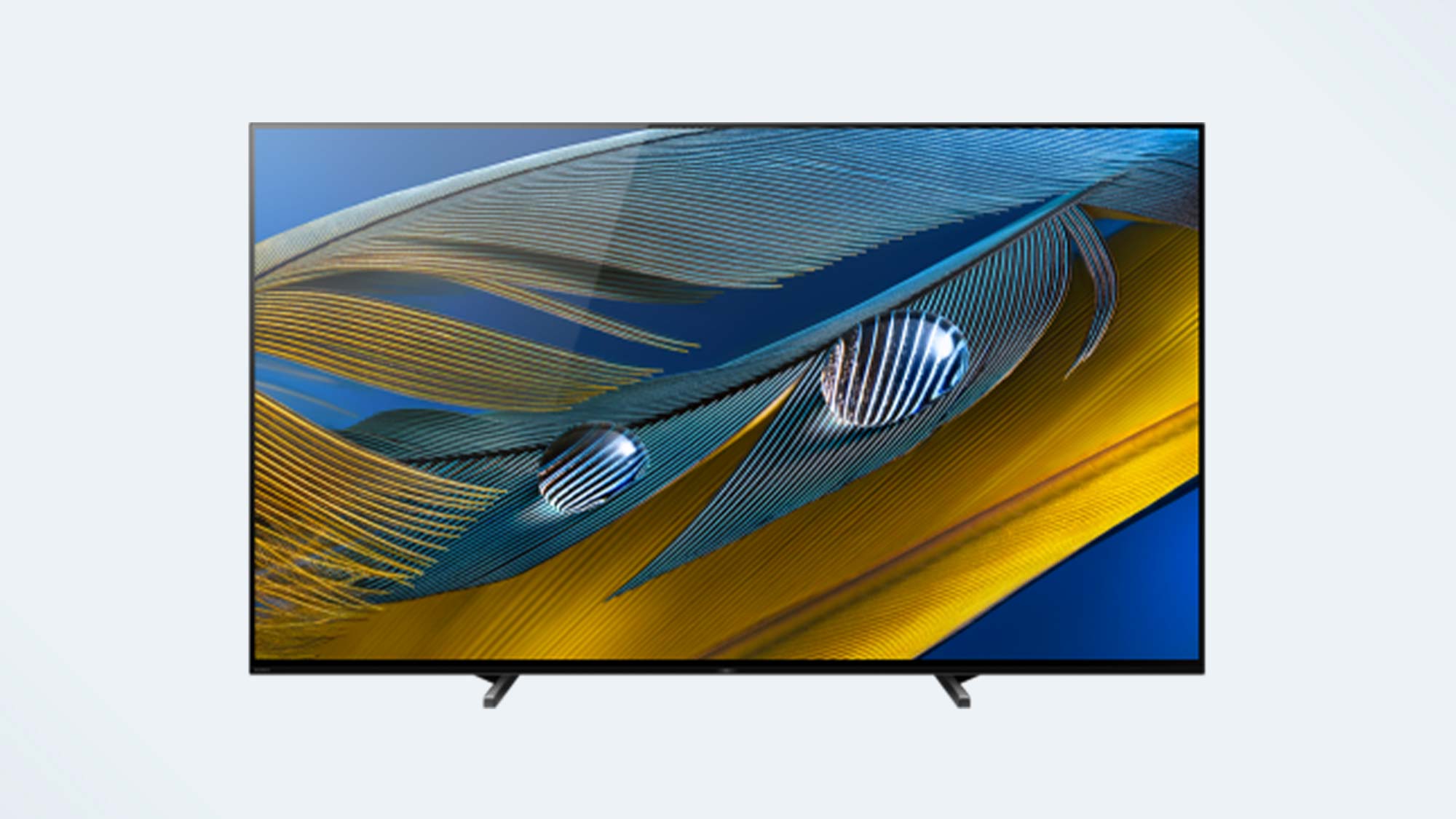
Whereas some TVs struggle with the early farmhouse scene in Blade Runner 2049, where chasms in contrast can rob Ryan Gosling and Dave Bautista of their facial details (and thus the scene of its pungent immediacy), the A80J kept both the blackest and the whitest parts of the scene in balance, ensuring you never miss the subtleties of actors’ expressions. Similarly, in Star Wars: The Rise of Skywalker, the set depicted the underground Exegol lair with all of its simmering, shadowy terror, and the jolting blue-white lightning strikes between Rey and Palpatine defined their interaction as exactly the titanic battle between light and dark it is.
The A80J is just as adept at handling color. In The Rise of Skywalker, the festival on Pasaana looked rich and varied, with the rainbow of hues of its celebrants’ robes surging (but not too much) against the bland sand and brown mountains of that desert world. The mid-20th-century, palette-busting fantasia of the new Disney-Pixar film Luca really popped, in the aquamarine tidal waters and the lush above-waves Italian Riviera landscapes alike.
Another movie looked dull, drab, and unappealing, with the searing brightness of its special effects standing in blazing distinction to the bewilderingly desaturated colors; luckily, this meant the A80J had flawlessly rendered the director’s vision for Zack Snyder’s Justice League.
Though most of our test content is native 4K, the A80J easily upscaled the 1080p version of Mission: Impossible—Fallout, turning out a striking and vivid (if not quite razor-honed) picture, artifact-free even in that film’s heavy, fast-moving action scenes.
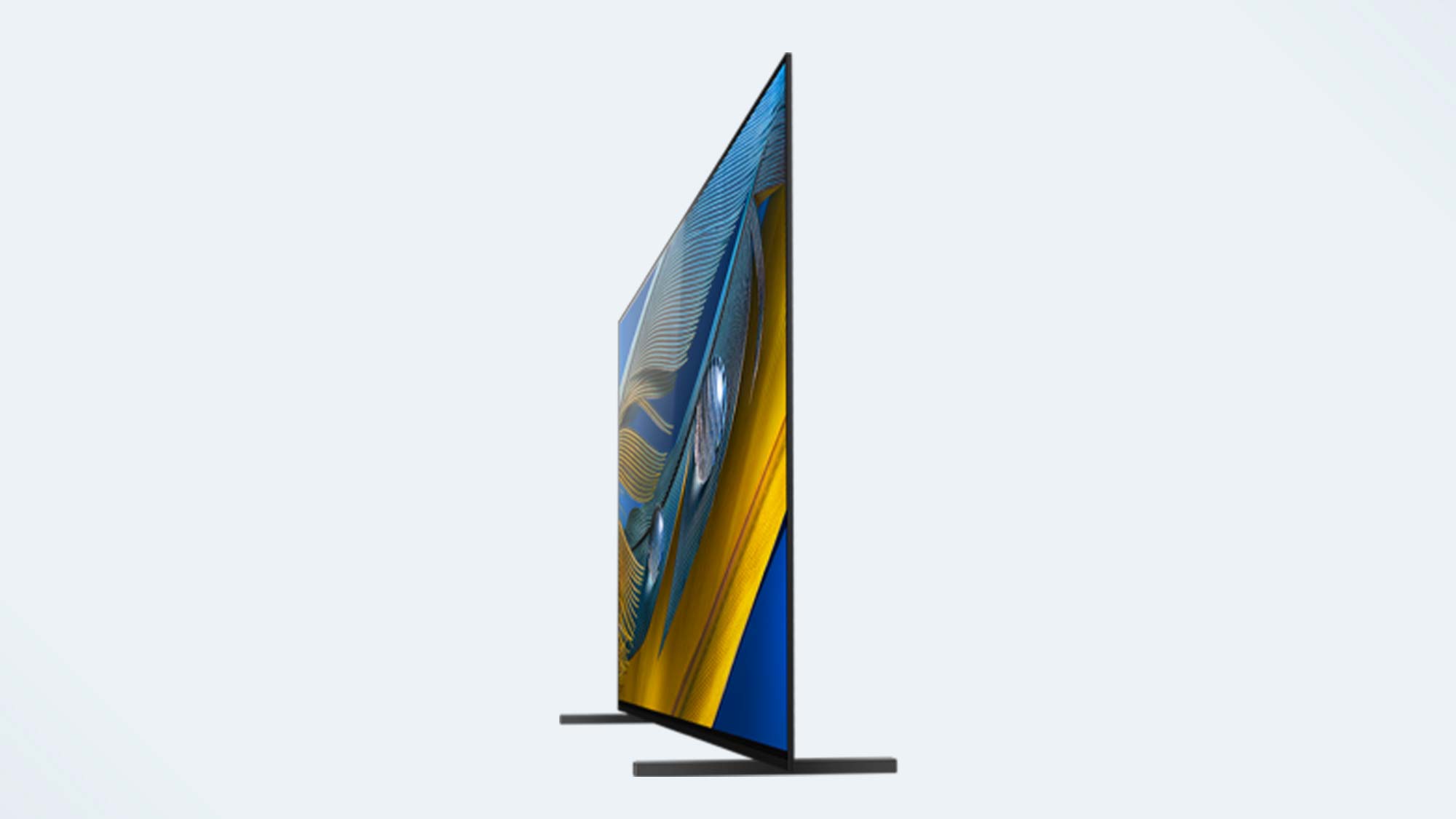
The set’s picture also looked good at wide viewing angles, with none of the washing-out we sometimes observe. At particularly extreme angles relative to the middle of the screen, the display took on a slight reddish cast, though this was more discernible in our full-screen pink, violet, and orange test patterns than with any movie or TV show—and, with full-screen red, green, or blue, it wasn’t noticeable at all. A dedicated 4K test pattern revealed no overscan, no issues displaying crisp 1- or 2-pixel lines, and deft treatment of color saturation, brightness, and sharpness across its 18 graphical figures.
Our anecdotal tests were performed in Standard mode except when HDR kicked in, and the picture mode defaulted to Dolby Vision Bright (with Vivid and Dolby Vision Dark the only other two available). These modes were just fine and should suffice for everyday viewing; in HDR mode, Vivid gave a sickly, Technicolor-acid-trip cast to everything, and Dolby Vision Dark mostly just made things look dim. The A80J offers two unique picture modes aimed at special kinds of content: IMAX Enhanced and Netflix Calibrated, which both did well within their restricted lanes (though the latter only works in the set’s Netflix app).
Sony Bravia XR A80J review: Test Results
We test TVs using two pattern generators (an AccuPel DVG-5000 for SDR and a SpectraCal VideoForge Pro for HDR), an X-Rite i1 Pro spectrophotometer, and Portrait Displays’ Calman calibration software. Our typical modus operandi is to disable all dynamic display adjustment features so we are evaluating all TVs on as level a playing field as possible. But it quickly became clear this approach would have some limitations with the A80J: Its picture quality is dependent on a lot of the settings we turned off.
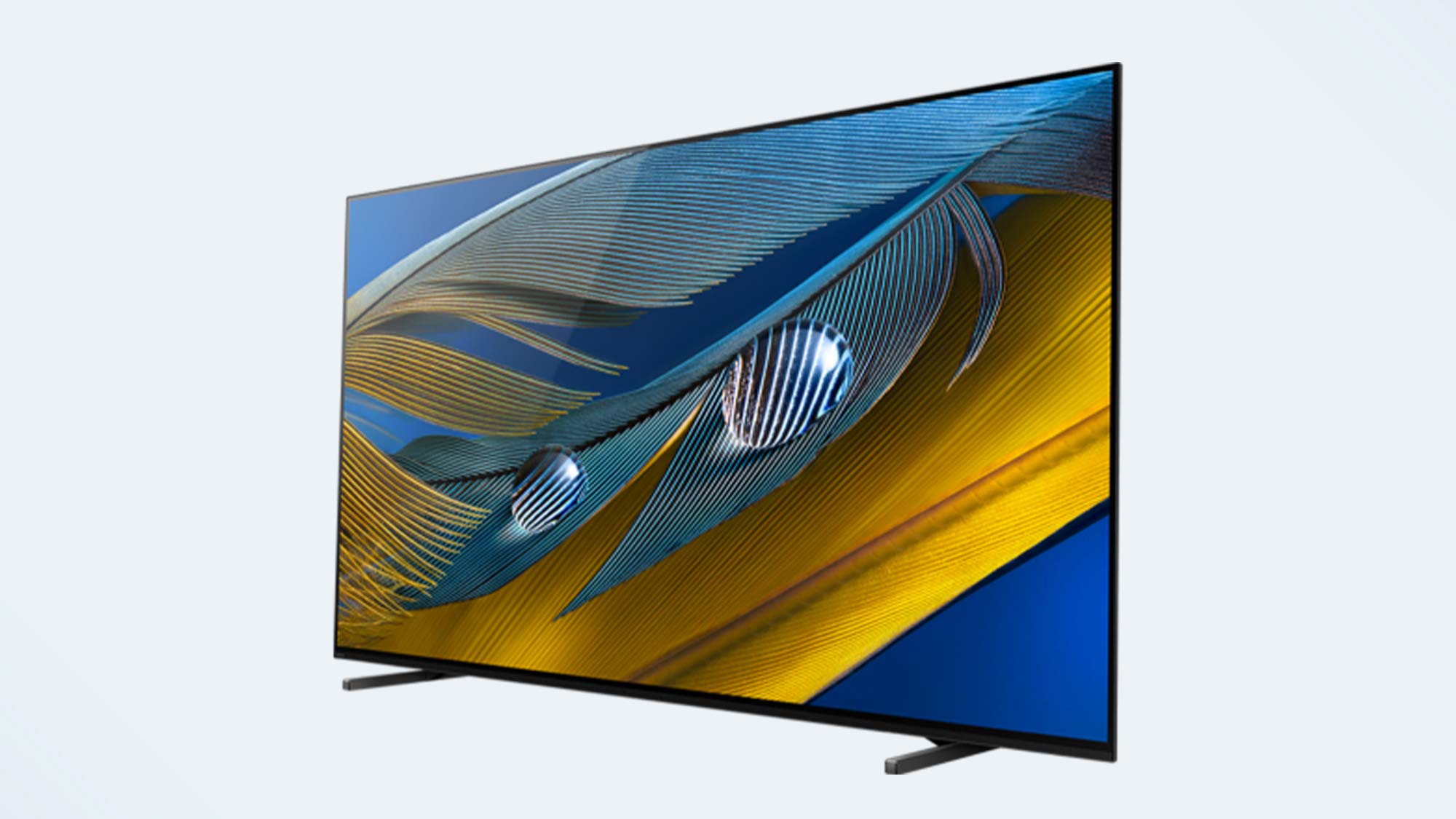
Tested our usual way, the set covered just 99.9916% of the Rec. 709 color gamut in Standard mode and maxed out at 145.2 nits in its brightest picture mode (Vivid) — well below the stellar performance we saw from LG’s G1 and CX OLED televisions. Our contact at Sony recommended testing in Custom mode, with the dynamic adjustments off, and the set’s color gamut coverage skyrocketed to 111.3361%. When tested in Vivid mode with the two most prominent dynamic settings disabled (Auto picture mode, which “automatically sets the picture mode based on the content from HDMI devices” and the light sensor), the brightness was a dazzling 713.7 nits (though even the 237.3 nits was better than the first time around).
There are a few key takeaways here. First, and most important, the A80J is a first-rate performer on a technical level in this price range, and has the capacity to please even the most demanding viewers. But its picture modes and individual settings carry more weight than on many sets, so if you’re not passionate about these nuances, you may better off leaving well enough alone.
Finally, for most content, the curiously named Custom mode provides the closest thing to a tightly calibrated picture out of the box. There’s a lot of potential confusion here for the everyday TV buyer, which is too bad, but the more adventurous will discover it doesn’t take much tweaking to reach a perfect picture.
Sony Bravia XR A80J review: Gaming
We use two Leo Bodnar Video Signal Lag Testers (an older 1080p version and a new one optimized for 4K) to measure the delay between a video signal passing from the input and displaying on the screen. In the A80J’s Game Mode, the results were 16.5 ms and 15.8 ms respectively—both on the high side for a TV such as this, but well below our 20 ms threshold for solid gaming performance.
The A80J’s 120 Hz maximum refresh rate is ideal for gaming on newer consoles like the Xbox Series X or the PS5. As previously mentioned, though, to take advantage of this feature, you’ll need to connect your console to either HDMI port 3 or 4, which are the only two that support HDMI 2.1; otherwise, you’re stuck with 60 Hz.
Sony Bravia XR A80J review: Audio
On the A80J, the 0.25-inch-thick screen becomes a speaker by way of Sony’s Acoustic Surface Audio+ technology, which uses two actuators and two subwoofers (now forward-firing, unlike the rear-firing subwoofer on the Bravia A8H) to turn the screen itself into the speaker while helping the TV maintain its (mostly) slim profile. The other audio technologies that come by way of the Cognitive Processor XR are more difficult to test definitively.
Though the hard-driving action scenes in Zack Snyder’s Justice League can sometimes feel oppressive, the sound was crystalline.
I watched a number of different types of video, from action movies to comedies to musicals, and had trouble detecting much of what Sony indicated I’d hear. When I closed my eyes, I was wrong at least as many times as I was correct about where the sound “should have” been coming from, and I’m not positive I heard anything that could be mistaken for full-room surround sound. At least the setup process, which the remote’s microphone measuring sounds produced by the TV to allow it to optimize its performance, is simple and takes mere seconds to complete. If you end up not liking what you hear from the TV, your best bet may be investing in one of the best soundbars.
But here’s the thing: I never felt cheated about not making out the three-dimensional, positional sound because everything I played sounded so good anyway. Soaring soprano lines cresting on high As and Bs came through with their piercing intensity intact, even in the uppermost reaches of the TV’s volume range. Though the hard-driving action scenes in Zack Snyder’s Justice League can sometimes feel oppressive, the sound was crystalline: Whether during the frenetic final fight or in (er, relatively) more intimate moments, the clarity was outstanding whether the set was set quiet or booming.
Bass was likewise satisfying, with the throbbing, staccato lows of The Knife’s “Silent Shout” declarative without overwhelming, no matter how loud. And in every sound mode I tested, the blend always had a delectable layering that plunged me into the center of the material’s aural universe. Sure, Standard was a bit flatter and Cinema was a bit rounder, but it was never less than right.
Maybe die-hard audiophiles wouldn’t be ecstatic, but to my ear, this was some of the best sound I’ve ever heard from an OLED—or a television of any type.
Sony Bravia XR A80J review: Google TV and smart features
Google TV represents a significant step up from Android TV, with an interface that is notably cleaner, more useful, and better at surfacing content you’ll want to watch. A navigation bar at the top of the screen sports a Search bar and provides quick links to five well-organized collections: For You (your personalized “start” page), Movies, Shows, Apps, and your Library of saved content. I rarely needed to stray off of the For You page, however, as it and Search were more than enough to satisfy my viewing habits.
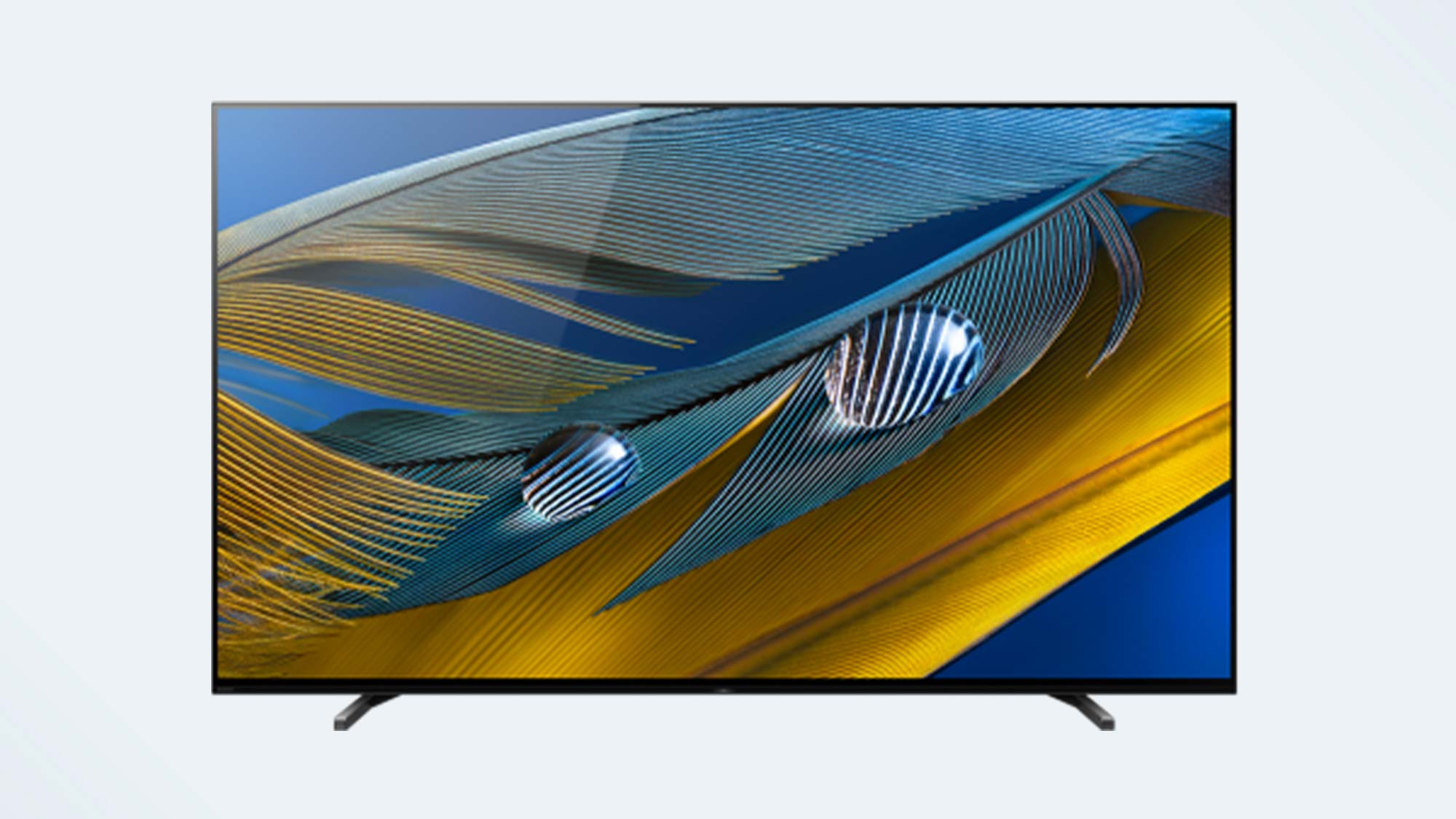
Search is remarkably flexible and robust. You can either type in what you want, scroll down to see general recommendations, or use Google Assistant voice controls. When I held down the remote’s Google Assistant button and spoke, the system understood all my requests (even, sadly, when I accidentally garbled “Tenet” as “tenant”), and it could either bring up traditional-style search results (“show me action movies”) or take me directly to apps that could answer my questions (“What’s new on Netflix?”). I ran into one temporary hiccup when I asked Google TV to take me to Disney+, and it griped that the app wasn’t installed (it was), but aside from this, it’s top-notch. These voice controls also work for accessing Google’s myriad other features; you can ask Google Assistant to display your calendar, play music via Spotify, and so on. (The lower-end Bravia X95J and the top-tier A90J are equipped with a hardware switch that allows hands-free use of Google Assistant, but the A80J requires the remote.)
You can also add content you come across during your day by adding them to your Watchlist, which lives under the Library tab. This is handy for those times (many of them, if you’re like me) when you don’t want to forget to check out something interesting later, but may not have the time when you first think about it. The Watchlist option is prominently featured in Google searches, and is a real time saver.
Google TV’s recommendations are surprisingly solid, too. The systems draw them from your Google activity (on whatever devices are set up with your Google Account), as well as your streaming services and apps, so if you’ve been feeding Google a lot of your personal information, Google TV is likely to predict your tastes pretty well. It surfaced Babylon 5 for me, even though I haven’t watched it since it hit HBO Max earlier this year, and was good about nudging me to return to shows or movies I hadn’t quite finished. A reminder to improve recommendations by rating videos was helpfully positioned near the top of the screen.
You can also stream content from your Apple devices with support for AirPlay, or from your Android phone or tablet thanks to the A80J’s Chromecast support, and there is support for Apple’s HomeKit smart home platform and Amazon’s Alexa.
Google TV greatly simplifies the process of setting up the A80J. After opening the Google Home app on your Android phone, you scan a QR code that appears on the TV’s screen to link the two devices. Connect to Wi-Fi, sign in with your Google Account, and you’re already largely finished. This lets you use the expansive suite of Google Services; search across all your TV apps; utilize voice controls (synced between devices with Google Voice Match) to open your calendar, contacts, reminders, and more; in some cases, link passwords to your streaming services; and display photos from your library when the set is in the screen-saving Ambient Mode.
Sony Bravia XR A80J review: Bravia Core
Included with the A80J is membership in Sony’s new streaming service, Bravia Core, and five “tokens” for redeeming videos from it. Using it, you can, of course, buy and watch movies the usual way. Or you can select from a number of titles that offer unlimited streaming. It also provides a catalog of IMAX Enhanced movies, which are optimized for the TV’s Bravia XR technology. And the whole service offers as an option Pure Stream, which streams 4K video at up to 80 Mbps (and you’re warned about its likely increase of data usage when you enable the feature).
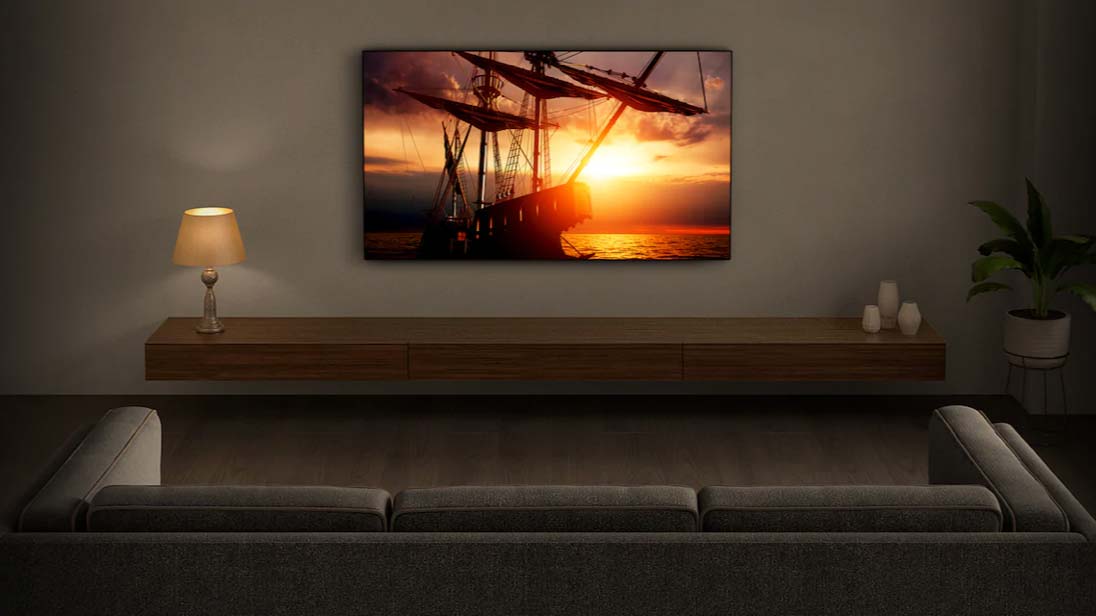
Though there’s a fair amount to like about Bravia Core, Pure Stream struck me as the best part of it (aside from the free movie credits), and movies I streamed using it looked quite good. That said, although there’s nothing wrong with the service, and there’s a decent amount there if you don’t feel like paying for one or more other streaming services, the selection is thin, and chances are you won’t need (or want to bother with) Bravia Core if you already subscribe to one or more streaming services you love. Google TV is so good at aggregating your current content and helping you find more, Bravia Core seems an extraneous, if better-than-it-has-to-be, addition.
Sony Bravia XR A80J review: Remote Control
Sony has not departed too far from its recent designs for the A80J’s remote control. It’s long and narrow (about 9x1.8 inches), with soft-touch buttons for the number pad and most of the more common controls (such as Volume, Channel, Back, and Home), and the keys arranged smartly and intuitively. The only light on the remote is one in the upper-left corner that glows orange to let you know when Google Assistant is listening.
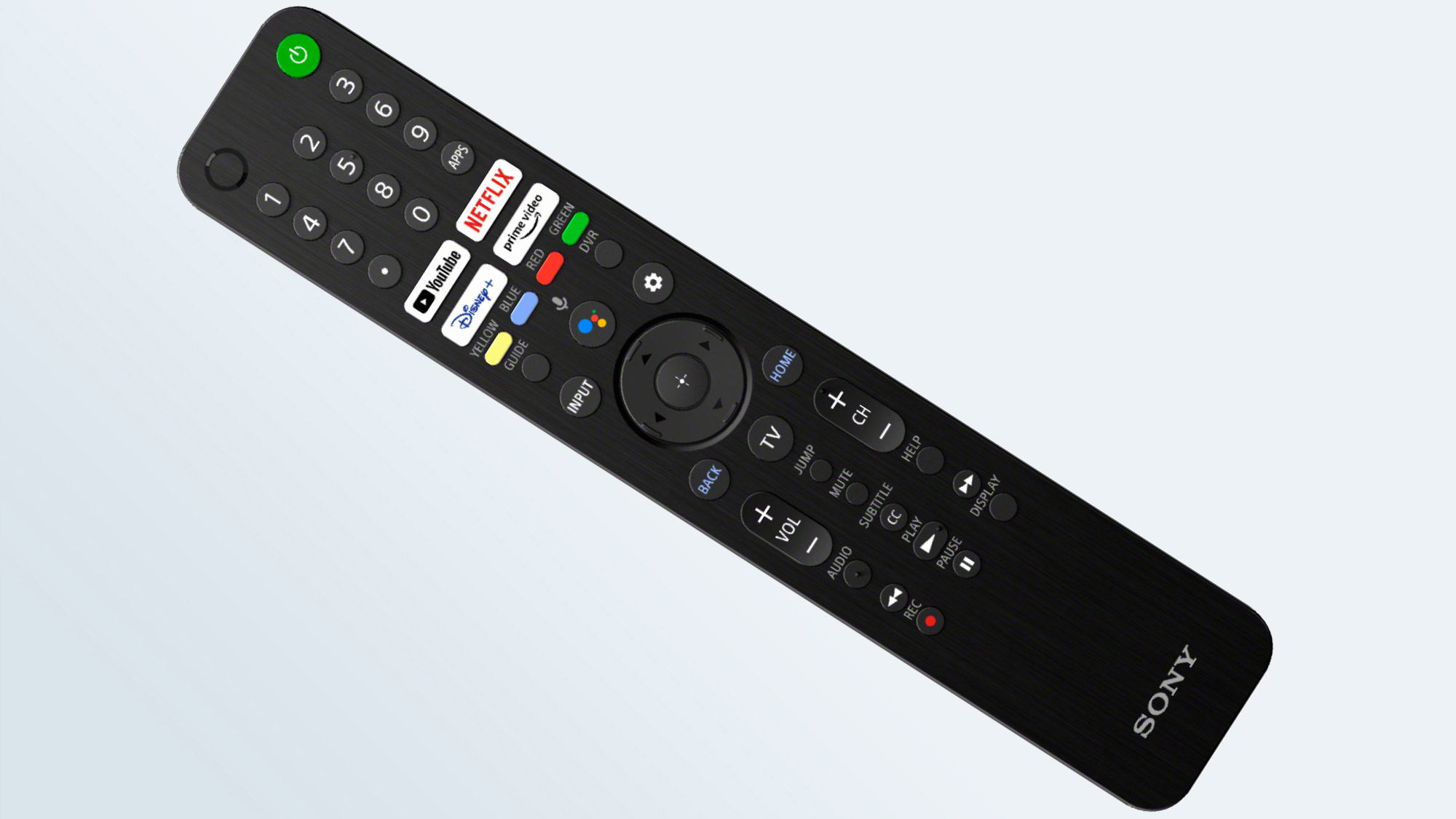
The only major change from previous iterations of this remote is the addition of two dedicated buttons for streaming services. Whereas previous models only had two (the A8H offered just Google Play and Netflix), this remote has four: for Netflix, YouTube, Disney+, and Amazon Prime video. I tend not to use these very much, as I prefer Google TV’s more wide-ranging, on-screen functionality. But they’re nice additions on a remote that’s big enough to accommodate them, and as these are among the biggest (and best) services out there, their inclusion offers little to complain about.
Sony Bravia XR A80J review: Verdict
As OLED TVs have gradually been notching downward in price, and have even reached the point where you can get some killer models for well under $2,000, it’s become progressively more challenging to make the case that spending just a little more on something higher-end is worth it. But the Sony Bravia XR A80J does so handily — and crushes whatever other expectations you may have had along the way.
You may be able to find sets with better color or brightness (such as the Samsung QN90A Neo QLED, or the LG G1 and CX) or more HDMI 2.1 ports (LG’s sets again), and there are even less expensive models out there (the Vizio H1 OLED) that will satisfy. But when you look at the complete package—which includes that killer sound; the abundant, finely tuned picture technologies, and Google TV with all the associated tie-ins—and the A80J is one tantalizing TV.
Matthew Murray is the head of testing for Future, coordinating and conducting product testing at Tom’s Guide and other Future publications. He has previously covered technology and performance arts for multiple publications, edited numerous books, and worked as a theatre critic for more than 16 years.
